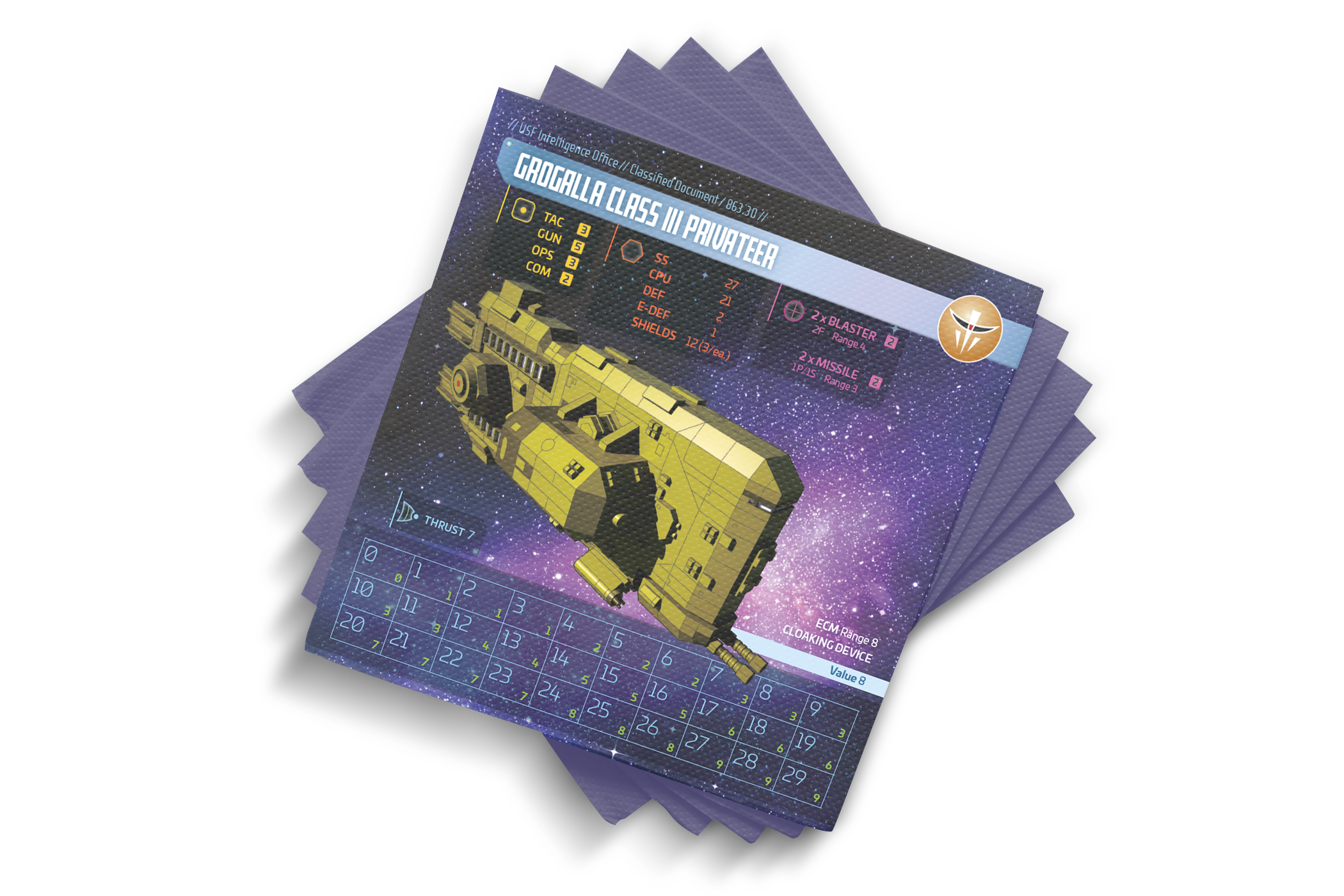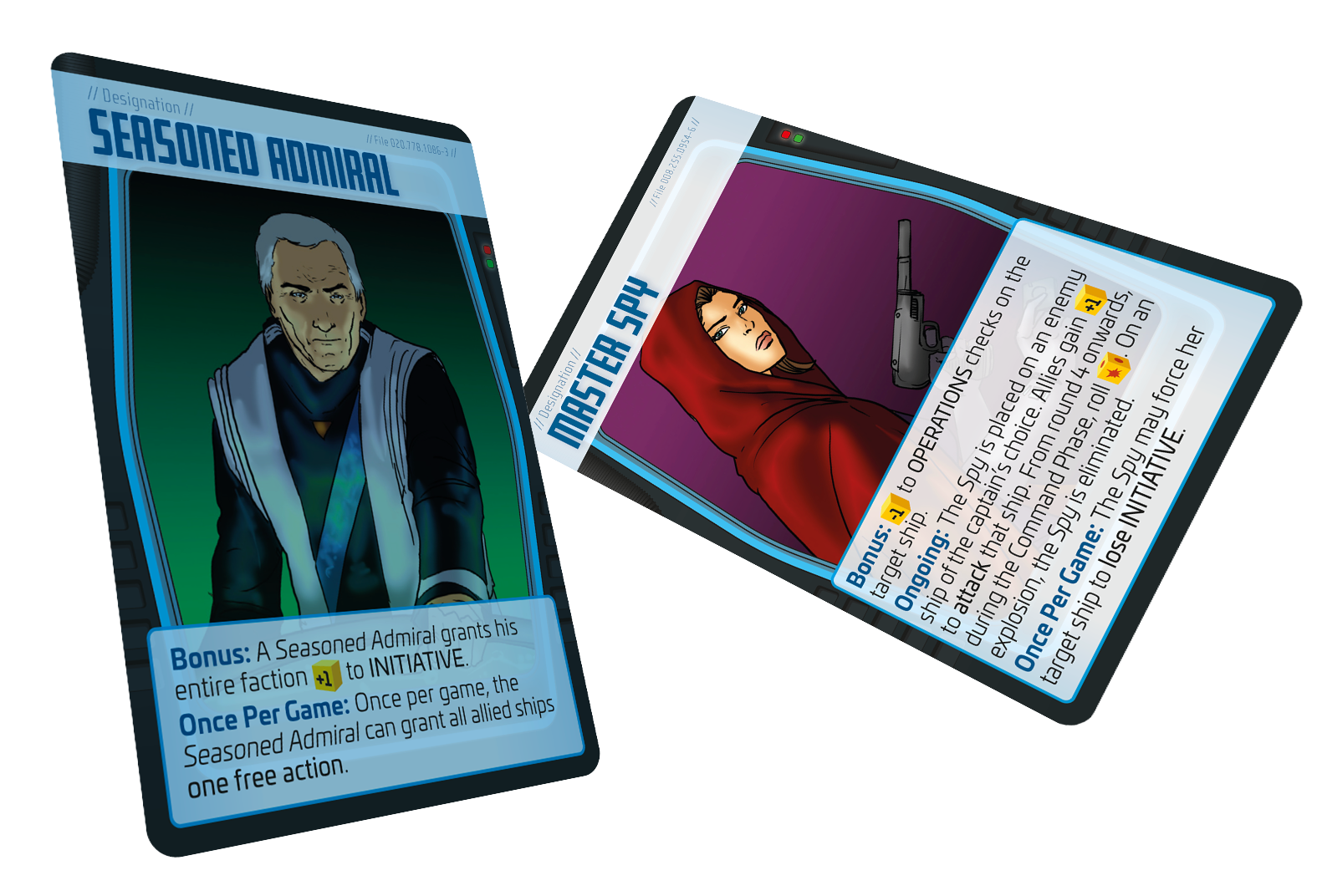SPACE FIGHT! is a game for 2-6 players, each of whom controls one starship. The game is played on a hex grid (called a starscape), and players are typically divided into two or more factions.
Each player moves a hexagonal ship token on the starscape, and spends actions to raise shields, fire weapons, undertake repairs, use sensors, and more. The larger the ship, the more actions it typically has available to it. However, size isn’t everything—smaller ships are faster and more maneuverable. One of SPACE FIGHT!’s core concepts is the turning circle: the bigger your ship, and the faster you are moving, the wider your turning circle. Be careful not to misjudge it and slam into that asteroid!
Starship Tiles
Each starship comes with its own tile which tells you its statistics, from scores like TACTICS and GUNNERY, information on shields and weapons, and a grid to track your current speed and turning circle. There are about 60 starships in the core game, from 6 different factions.
Dice
SPACE FIGHT! uses six-sided dice which come in two flavors—yellow action dice which are used to determine the success of an action, and red damage dice which determine how much damage your attacks do.
The yellow action dice have three blank sides, two sides marked with a dot, and one side marked with an explosion. When you roll the dice, you will roll a number of yellow action dice based on your ship’s statistics, and count the number of symbols you get; an explosion means the die ‘explodes’ and you get to roll it again and add the result to the existing total. This means there’s always a chance of success, no matter how slim.
Game Phases
Each round in SPACE FIGHT! is divided into phases, and different action cards can be played in each phase. Those phases are COMMAND (where you raise shields and other defenses and choose your actions for the round), SENSORS (where you try to gain information about other ships), MOVEMENT, ACTION (where you fire weapons, launch squadrons, operate tractor beams and so on), and REPAIR (where you try to restore some of the damage you have taken).
COMMAND PHASE (shields, firewall, point defenses, focus)
SENSORS PHASE (sensor locks, gain information)
MOVEMENT PHASE (change speed, move your speed, ram, evasive maneuvers, emergency turns)
ACTION PHASE (weapons, hacking, launch squadrons, tractor beam, cloak, transporters)
REPAIR PHASE (repair superstructure, restore CPU)
Action Cards
The actions you have available are represented by a deck of action cards. Each round, during the Command Phase, you will form a hand of action cards as you issue your orders for this round, selecting from nearly 20 possible actions. You won’t be able to do everything, so you need to choose wisely and try to predict what you’ll need!
Initiative
Starship captains roll for initiative at the start of each turn, and this determines the order in which they act. This is affected by the size of your ship—smaller ships are more likely to win initiative. Those who win initiative move last in the MOVEMENT phase, as that enables them to react to their enemy’s movement; but they then get to act first in the ACTION phase. Being big has its advantages, but being fast gives you a significant tactical edge!
Heroes
Each ship has a Hero on it. Heroes include the Bold Captain, the Spy, the Plucky Pilot, the Legendary Engineer, the Dark Lord, and more. These Heroes grant your ship special abilities or bonuses. Sometimes you might move a Hero from one ship to another using shuttles or transporters, or you might even try to put one on an enemy ship—a ship with a Saboteur aboard is in trouble!






